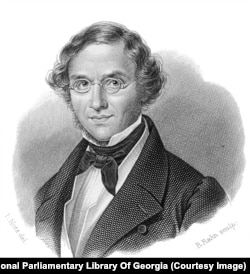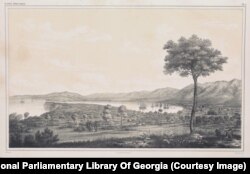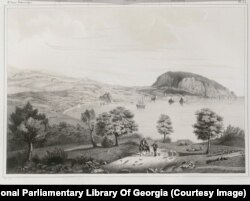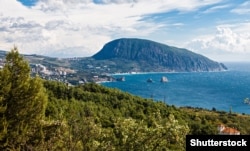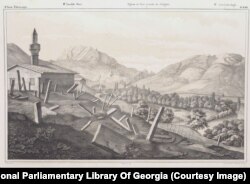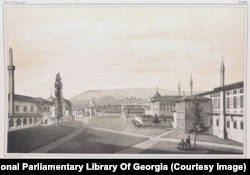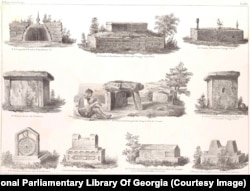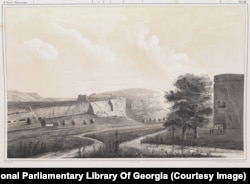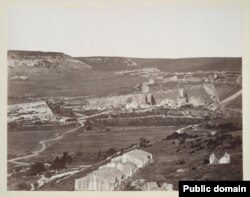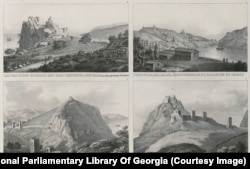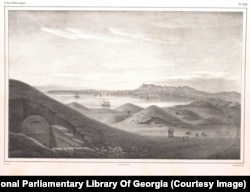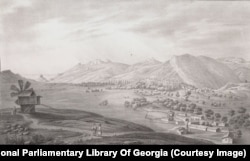In September 2021, RFE/RL published several images of the Caucasus sketched by Swiss explorer Frederic Dubois shortly before cameras became commercially available.
Now, thanks to the National Parliamentary Library of Georgia, which holds three rare volumes of Dubois's sketches, we can publish work from the final leg of his epic journey.
From 1833 to 1834 the French-speaker travelled through the Crimean Peninsula, capturing the fascinating culture and landmarks -- some of which have since disappeared -- of one of Europe's most prized and battle-scarred pieces of land.
Dubois, a Swiss-Prussian nobleman, received the blessing of the Russian Tsar Nicholas I to explore and draw the Caucasus and Crimea. The oversized "atlases" he later published were filled with descriptions of what he saw on the journey, along with exquisitely detailed sketches.
The Gelendzhik sketch suggests Dubois probably made the journey from the Caucasus, where he spent around two years working, to Crimea along the coast by boat.
Modern photos of the Ayu-Dag location, near Yalta, demonstrate Dubois's painstaking visual accuracy. The two rocks off the coastline appear virtually identical nearly 200 years later.
The Crimean Khanate (1441-1783) was infamous for amassing vast wealth by launching raids deep into Europe to capture slaves. Abducted Russians, Poles, Lithuanians, and others were mostly sold into a life of servitude to buyers in the Ottoman Empire.
Feodosia was notorious under its former name, Kaffa, for a miserable and busy slave market. It was over these walls that one of the first recorded instances of biological warfare was launched. In the 14th century, a Mongol warlord catapulted the corpses of men who had died from the bubonic plague over the city's defenses, infecting the population and accelerating the spread of the disease into Europe.
Sevastopol is located near the center of the Black Sea and has long been a coveted possession for empires. Its recorded history began in the sixth century BC when a Greek city was founded on its shores.
Dubois claimed that tombs such as these "more or less reveal the state of [a civilization, the scope and the nature of its beliefs and the progress which it has made in the development of its intellectual faculties. This is why, in my travels, I have applied myself to collecting all that could enlighten me in this respect, and I offer here the results of my research."
The cliffside monastery (in the center of the photo) was built by the tsarist authorities soon after the Swiss explorer’s visit.
The hill-hugging fortification at Sudak was built by the Genoese in the 14th century. The Republic of Genoa was a maritime power based in today's northern Italy that became a major player in the Black Sea slave trade.
On the left in the sketch above is the entrance to one of several ancient burial mounds that pimple the landscape around Kerch.
Dubois returned to Western Europe in 1834. After his books on the Caucasus and Crimea were published, he received a gold medal from the French Geographical Society and the Order of St. Stanislaus. He was also gifted a large sum of money from the Russian tsar. His final years were spent on archaeological research in Europe. He died in 1850, aged 51.

